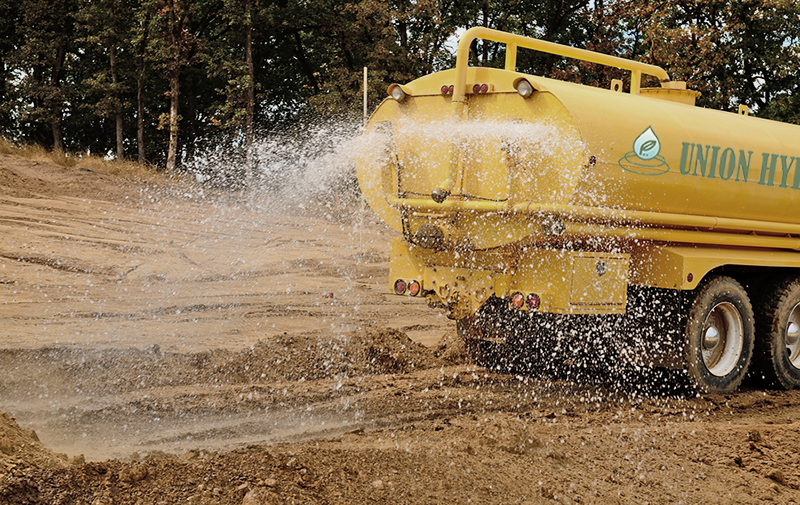Commercial Hydroseeding - Union & Non Union Projects
Serving California, Nevada, and Arizona
Commercial dust control, or dust suppression, refers to the methods and techniques used to mitigate or eliminate the generation and dispersal of dust particles in various industrial, construction, mining, and transportation settings. Dust control is crucial to maintain a safe and healthy work environment, minimize environmental impact, and comply with regulatory standards.
Union Hydroseed offers comprehensive commercial dust control services in California, Nevada, and Arizona.
Dust particles can arise from activities such as material handling, mining operations, demolition, construction, and transportation on unpaved roads. These particles can pose respiratory hazards, reduce visibility, and contribute to environmental pollution. Dust control measures aim to minimize airborne dust by preventing its generation or suppressing its dispersion.
Effective commercial dust control requires a comprehensive approach that considers site-specific conditions, dust generation sources, and the appropriate control measures. Dust control applications vary depending on the scale of the operation, ranging from small-scale local solutions to large-scale industrial dust suppression systems.

We offer commercial water trucks for rent in Southern California. Rental includes experienced operators. Contact us for details.
There are several effective methods of commercial dust control, depending on the specific application and circumstances. Some commonly employed dust control techniques include: